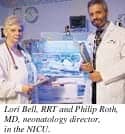Extremely drug resistant tuberculosis (XDR-TB) no longer has to be a looming fatal diagnosis, even for those in resource-poor settings. This according to the recent results from a study conducted in Peru from 1999-2002.
The study found that over 60% of XDR-TB patients who were not co-infected with HIV were cured after receiving a majority of their personalized treatment at home or in community-based settings.
“It’s essential that the world know that XDR-TB is not a death sentence,” says lead author Carole Mitnick, from Harvard Medical School. “As or even more importantly, our study shows that effective treatment does not require hospitalization or indefinite confinement of patients.”
Extremely drug resistant TB is not only resistant to the first-line anti-TB drugs, like multi-drug resistant TB is, but XDR-TB is also resistant to the two most important second line drugs.
During the study 810 patients whose TB treatment was previously unsuccessful received individualized drug treatments and additional services as needed, such as surgery and nutritional support. Each individual’s regimen included five or more drugs to which the infected strains were likely to respond, based on the susceptibility results for 12 anti-TB drugs.
At the end of treatment, 60.4% of the XDR-TB patients were cured.
“It is important for people to understand that this ambulatory form of treatment exists, is successful, and can be widely implemented in resource-poor settings,” says Mitnick.
The study is published in the August 7 edition of the New England Journal of Medicine.







